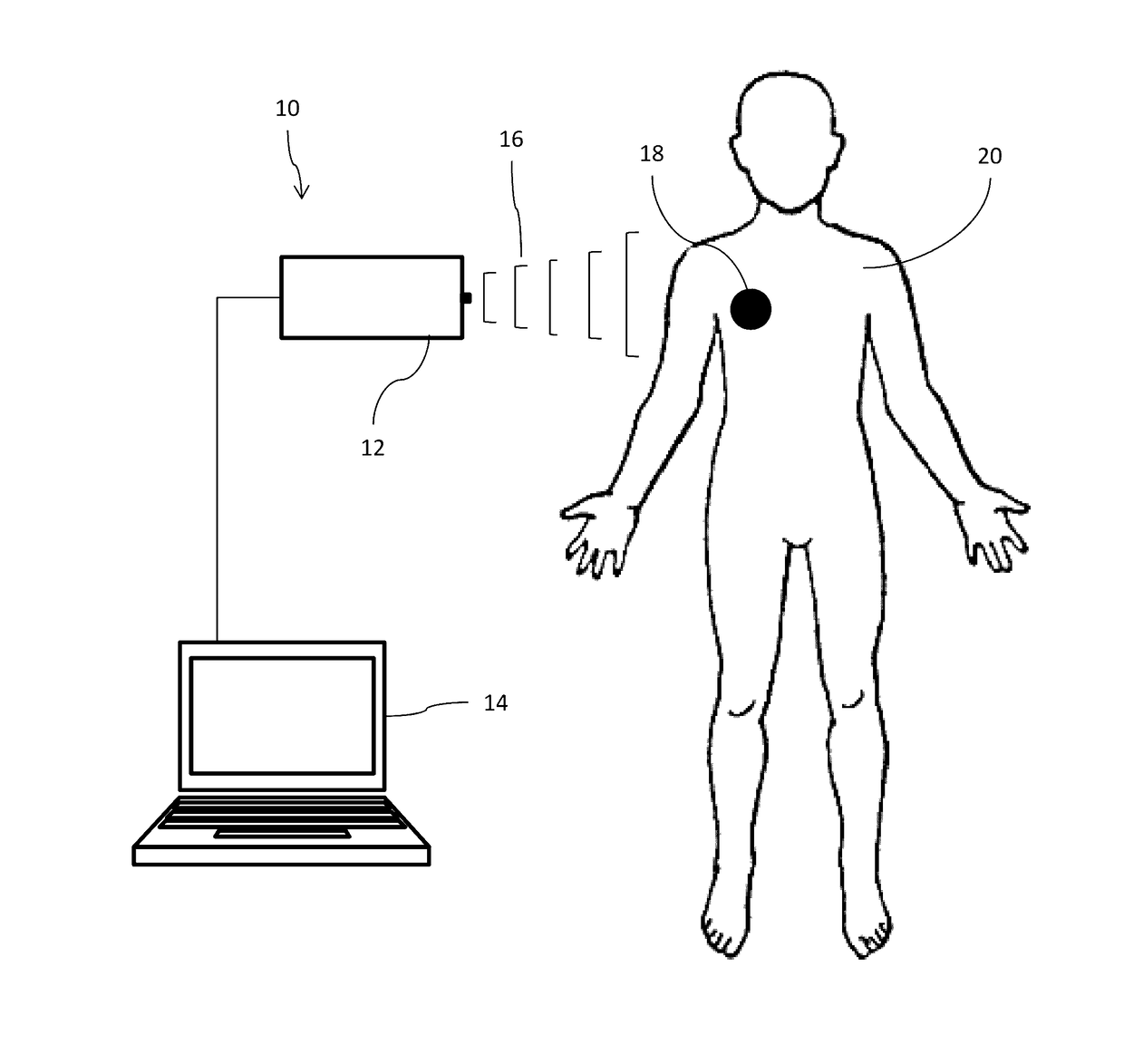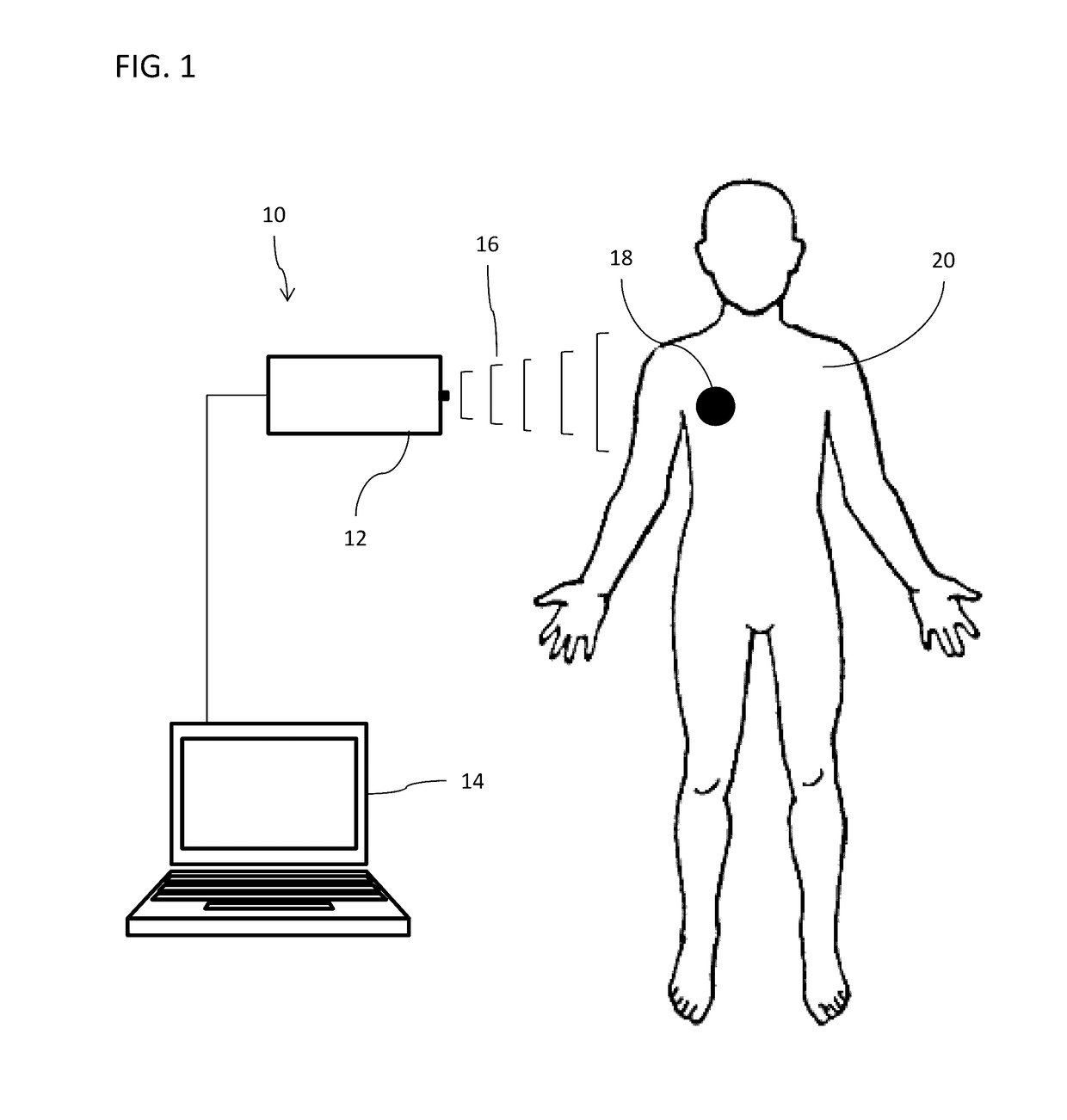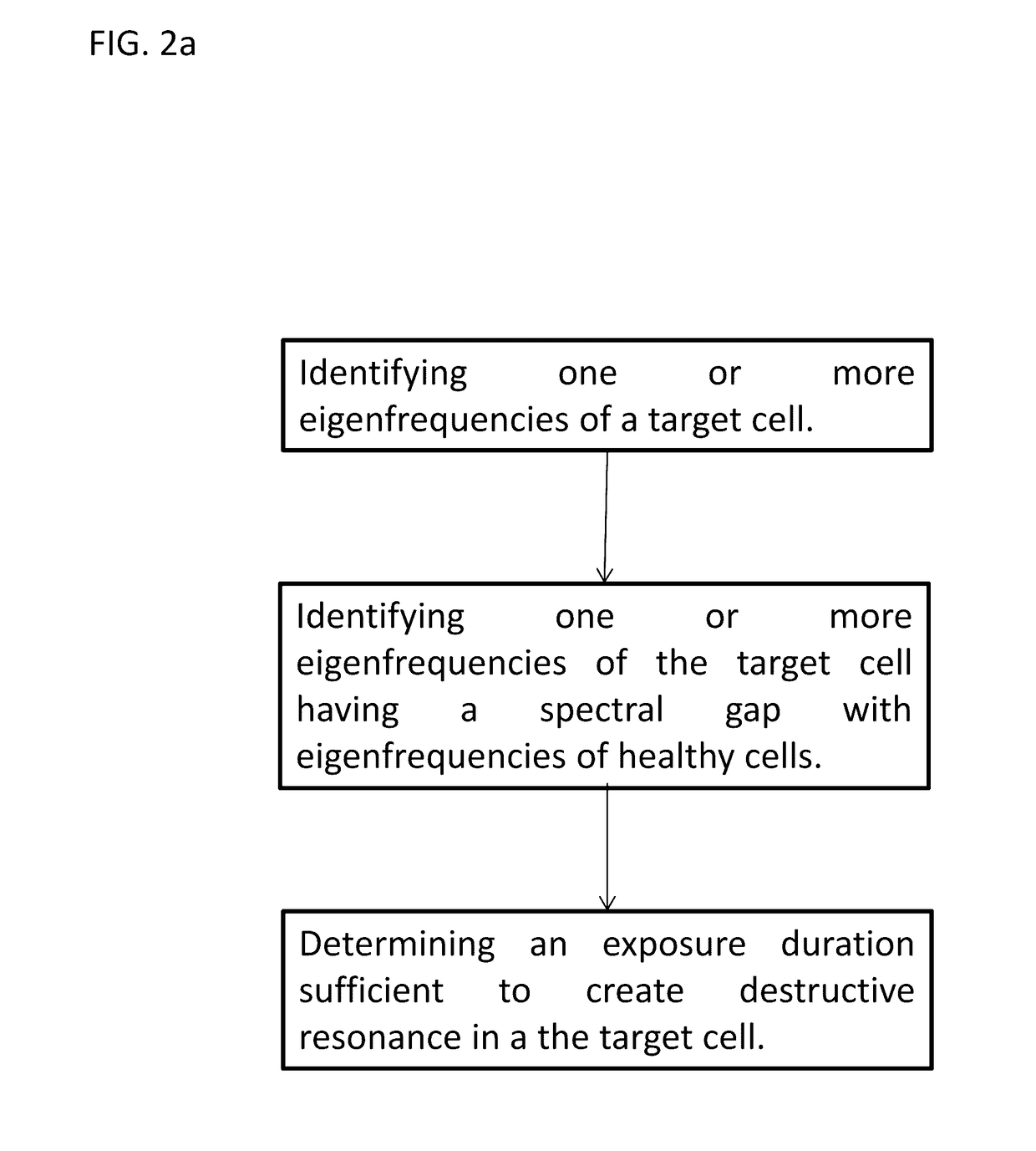Targeting Cancer Cells Selectively Via Resonant Harmonic Excitation
- Summary
- Abstract
- Description
- Claims
- Application Information
AI Technical Summary
Benefits of technology
Problems solved by technology
Method used
Image
Examples
example 1
[0088]Based on the elastic model of the cell described in the foregoing, embodiments allow for the computation of the normal modes of vibration for use in oncotripsy for both healthy and cancerous cells using finite elements. The current exemplary embodiments provide methods to assess the accuracy of the finite element model used in subsequent calculations by means of comparisons to exact solutions. In one example a single spherical cell is considered and compared to numerically computed eigenmodes with the analytical solution (e.g., Kochmann, D. M., Drugan, W. J., 2012. Proc. R. Soc. A, 1-25, the disclosure of which is incorporated herein by reference) for an elastic sphere with an elastic spherical inclusion.
[0089]In the harmonic range, the finite-element discretization of the model, in accordance with embodiments, leads to the standard symmetric linear eigenvalue problem:
(K−ω2M)Û=0 (EQ. 11)
where K and M are the stiffness and mass matrices, respectively, ω is an ...
example 2
[0093]Previously an analysis was described concerning embodiments for determining the resonant response of cells and tissues under harmonic excitation in the harmonic range during oncoptripsy. In this example, confirmation and extension of the conclusions of the harmonic analysis are confirmed by carrying out fully nonlinear implicit dynamics simulations of the transient response of healthy and cancerous cells under resonant harmonic excitation.
[0094]In this example, a geometry of ratio n / c=1 is considered, as provided in FIG. 4, together with the material parameters of Table 1. Attention in this analysis is given to the long wavelength limit, i.e. to ultrasound radiation of wavelengths larger than the cell size. In keeping with this limit, harmonic displacement boundary conditions are enforced directly as shown in FIG. 3 in order to mechanically excite the cell. The strength of the harmonic excitation used in the calculations is û0=0.04 μm.
[0095]In the simulations,...
example 3
ion of Oncotripsy Viability
[0098]As described, oncotripsy, in accordance with embodiments, provides means of selectively targeting cancer cells via resonant harmonic excitation. The method makes use of aberrations in material properties of cancerous cells which allow to induce local resonance up to membrane lysis in cancerous cells while leaving healthy cells intact. In this example the influence of viscoelasticity on the oncotripsy effect is explored. Based on Rayleigh damping, viscoelastic target frequencies are derived and used to simulate the fully nonlinear transient response of healthy and cancerous cells at resonance. Results confirm the viability of oncotripsy with viscoelastic material behavior of cell constituents accounted for.
[0099]As described above, it has been shown in embodiments that cancerous eigenfrequencies lie above those of healthy cells, with a typical gap in the lowest natural frequency of about 229,812 rad / s, as shown in FIGS. 13a and 13b. It is also shown t...
PUM
 Login to View More
Login to View More Abstract
Description
Claims
Application Information
 Login to View More
Login to View More - R&D
- Intellectual Property
- Life Sciences
- Materials
- Tech Scout
- Unparalleled Data Quality
- Higher Quality Content
- 60% Fewer Hallucinations
Browse by: Latest US Patents, China's latest patents, Technical Efficacy Thesaurus, Application Domain, Technology Topic, Popular Technical Reports.
© 2025 PatSnap. All rights reserved.Legal|Privacy policy|Modern Slavery Act Transparency Statement|Sitemap|About US| Contact US: help@patsnap.com



